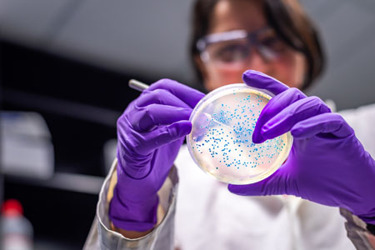Navigating A New Standard In Microbial Protein Expression
By Erik Nordwald, Ph.D., and Tyler Telander, MS, KBI Biopharma

The complex task of developing protein therapeutics adhering to the highest safety, identity, strength, purity, and quality (SISPQ) targets can be a costly and time-consuming endeavor. Low titers increase the number of batches required to meet product demands and drastically increase cost and time, sometimes leading to a financially unfeasible program. Product and process-related impurities increase the burden on downstream purification, challenge developing timelines, increase complexity, and further expand program costs.
An ideal therapeutic protein “factory” creates a pure target product with high titers from the start, which can minimize development risk, timelines, and cost. Furthermore, the class of proteins that can be made within a given factory is often limited, so there is an innate need to defend against potential later-stage overhauls and create a distinct factory that propels programs forward, expands possibilities, and salvages struggling programs to keep them viable.
E. coli has long been implemented as a therapeutic protein factory due to its simplicity, tractability, and wealth of information characterizing the microbe. Biotherapeutics produced from E. coli include growth factors, interleukins, cytokines, FABs, and more. Recent advancements in genetic engineering, analytics, and strain screening allow for reimagining E. coli as an “optimal” protein factory, not just a common one or as an expression system artifact.
Get unlimited access to:
Enter your credentials below to log in. Not yet a member of Bioprocess Online? Subscribe today.
